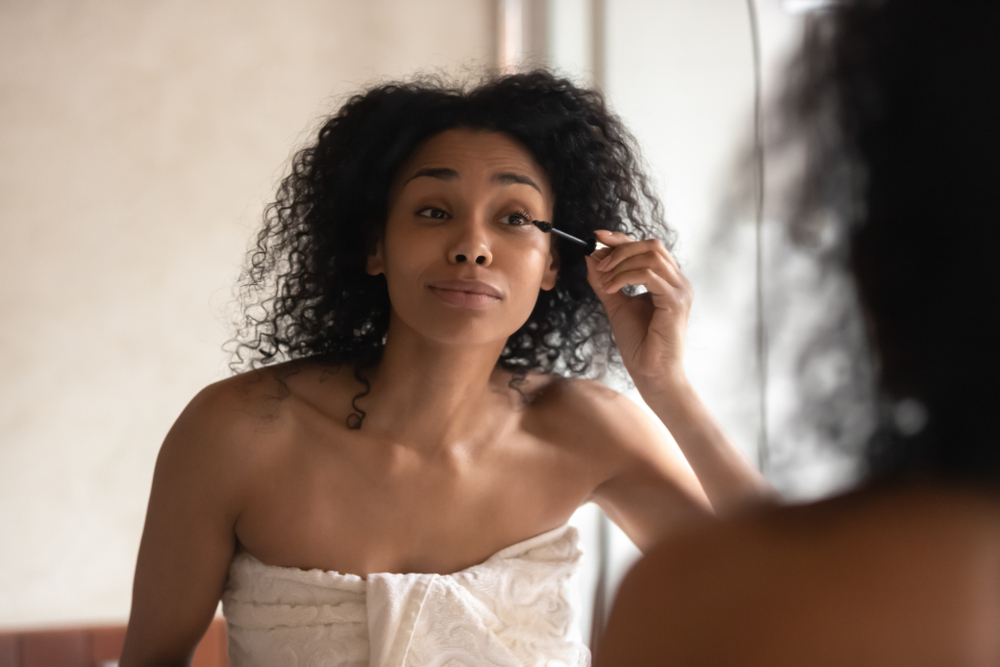The intersection between skin care and makeup is a beautiful thing. But one of the most common causes of confusion when these worlds collide is what order to apply your products. And yes, it matters. Getting the order right affects how well each formula works on your skin and how smoothly they blend together to achieve that healthy, radiant glow.
If primer is part of your beauty routine, one of the questions on your mind is likely whether to use primer before or after sunscreen. After all, sunscreen is arguably the most crucial part of any healthy skin regimen. While these two products may have a similar texture, they act differently on the skin and have distinct purposes. Read on to find out how to use primer and sunscreen together for the best results.
How Are Sunscreen and Primer Different?
Before you layer a sunscreen and primer together, it's important to understand how each works.
Primer
A primer is usually a water-based or silicone product that helps to create a barrier between your skin and makeup. This makes application smoother and easier and helps your makeup last longer, from foundation to eyeshadow to blush. You can also choose a primer that's suitable for your specific skin type—such as one with a mattifying finish or one that minimizes the appearance of visible pores. Others are loaded with hydrating ingredients like Hyaluronic Acid for drier skin types or color-correcting pigments to reduce redness or sallowness.
Sunscreen
Sunscreen's role is to protect your skin from ultraviolet A (UVA) and UVB radiation. There are two main types of sunscreen: mineral and chemical. Mineral sunscreen is also referred to as physical sunscreen. It deflects and scatters UVA and UVB rays from the surface of the skin like a shield with ingredients like Titanium Dioxide and Zinc Oxide. Chemical sunscreen, on the other hand, absorbs UV radiation with ingredients like Octinoxate and Avobenzone, converting rays to heat and sending them away from the skin.
Should You Apply Primer before or after Sunscreen?
Sunscreen should always be the final step in your skin care routine just before your makeup. Pro tip: Leave a few minutes between applying your sunscreen and beginning your makeup routine so it has adequate time to dry and settle into your skin. This can also help avoid pilling. Then, apply your primer with your fingers or a clean sponge and let it set before following up with a tinted moisturizer or foundation.
Wondering if that layer of makeup will affect your sun protection? Since primer creates a barrier between products, it won't compromise the efficacy of your sunscreen. In fact, it can actually help keep it in place longer. Just make sure to heed The Skin Cancer Foundation's advice and never use makeup with SPF in place of a dedicated facial sunscreen. Makeup with SPF provides a nice extra boost, but it doesn't provide the same level of protection.
As a general rule of thumb, use a primer and foundation with similar textures. So if you're using a silicone-based primer, follow with a silicone-based foundation. Alternatively, use a water-based primer with a water-based foundation. This will also help prevent pilling!
How Can You Reapply Sunscreen over Makeup?
While you'll apply your first full layer of sunscreen beneath your primer, you'll need to reapply sunscreen throughout the day to maintain your skin's protection. The best way to do this over makeup is to apply a sheer, lightweight formula like EltaMD AOX Mist Broad-Spectrum SPF 40 with a sponge or brush. This formula sinks invisibly into the skin without leaving behind a white cast, making it perfect for those midday top-ups. Plus, it's enriched with antioxidants to help prevent signs of premature aging and rejuvenate and hydrate your skin.
How to Use Primer and Sunscreen for a Healthy Glow
While layering these products can help your skin look beautiful and stay healthy from day to night, remember to remove it all thoroughly before heading to bed. This will keep your skin feeling its best and prevent congested pores and breakouts. For heavy eye makeup and foundation, start by applying micellar water to a cotton pad and gently sweep away the top layer. Then, follow up with a product like EltaMD Oil-in-Gel Cleanser to melt the day away, including water-resistant sunscreen and long-wear makeup. Finally, apply your usual evening serum and moisturizer before sinking into bed.
Now that you know how to get the most out of your skin care products, you can layer them with confidence. Just remember to reapply sunscreen throughout the day and remove every last layer at night for radiant skin that shines from the inside out—with or without makeup.
